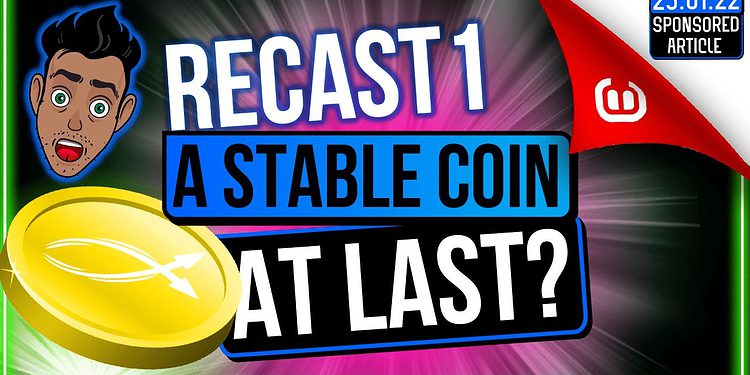The developers of Recast1 coin hail it as the first true non-fiat oriented stable coin. It’s a bold claim, but the token’s unique infrastructure might yet earn it the desired crown.
“When we came up with the concept of Recast1, we looked at a lot of other coins. We took what we liked – like unlimited supply which works so well for Doge and Ethereum – but we also added our own flavor. We realised that any coins tied to collateral are susceptible to hard crashes in the economy, and we knew we needed a new way to help our coin retain its value,” says Imran Tariq, CEO of Recast1.
Redefining the market
Fiat currencies are international monetary systems backed by governments or pinned to another asset like gold or silver. They are guaranteed against these assets, and this is how they retain their value. Of course, their stability depends mostly on the state of those assets, and the governments or organizations which regulate them. In short, fiat currencies are only as good as the folks behind them.
Fiat currencies are also known as Centralized Finance or CeFi because they are regulated and controlled by a central body, while DeFi or decentralized finance is the opposite. Instead of one organization being responsible for a currency, in DeFi everyone is a stakeholder in the whole system.
This means that, unlike banks, which hold private ledgers for their customers, in DeFi everyone can see every transaction. It is from this immutable transparency that DeFi gains its value. Unlike fiat currency, there are no guarantees, instead, the value of the currency is derived from public trust.
Rewards for trading
The concept the Recast1 developers came up with for stabilizing their token is simple. Instead of ‘punishing’ traders by charging transaction fees every time Recast1 tokens change hands, the system is designed to reward traders with more tokens. Capped by inflation and underpinned by a never-ending potential supply, the system is designed to keep the coin price buoyant.
PoS becomes PoT
Perhaps most novel is the token’s new proof of stake system which the developers have dubbed CPOS or Creation Proof of Stake. The system is a hybrid of traditional methods which takes elements of both POS and DPOS to create a best-of-both-worlds scenario. The main difference is that instead of paying fees to trade, traders earn additional coins. This concept is called PoT (Proof of Trade) and is an algorithm that looks at the volume of Recast1 coins traded and rewards the token holders who exceed a specific target.
The commercial applications on Recast1 are obvious. Imagine how useful a coin that rewards trading would be to individuals and traders who trade huge volumes every day. Hence, the developers predict Recast1 has the potential to save frequent traders between 2 and 5 % in fees every year.
Whether Recast1 earns the title of non-fiat-oriented stable coin is a matter for future historians, but the team behind the project has certainly found some innovative ways to keep their token buoyant. You can read more about Recast1 and the team behind it here.
Banter take
2022 will give rise to new stablecoins mechanics, trends and token economies. While we are not invested in and have no plans to invest in Recast 1 we will be keeping an eye out to see if it follows the positive trend.
Paid placement policy
Recast1 has paid for this to be placed on Crypto Banter, because they want to reach our audience. And we have accepted because it pays our bills. HOWEVER, the information above is supplied by Recast1 to Crypto Banter. We take no responsibility for its veracity, and publish it as a service to the Banter Fam and to the broader crypto community. We have not invested in this project. As always, DYOR before investing in any new project.






